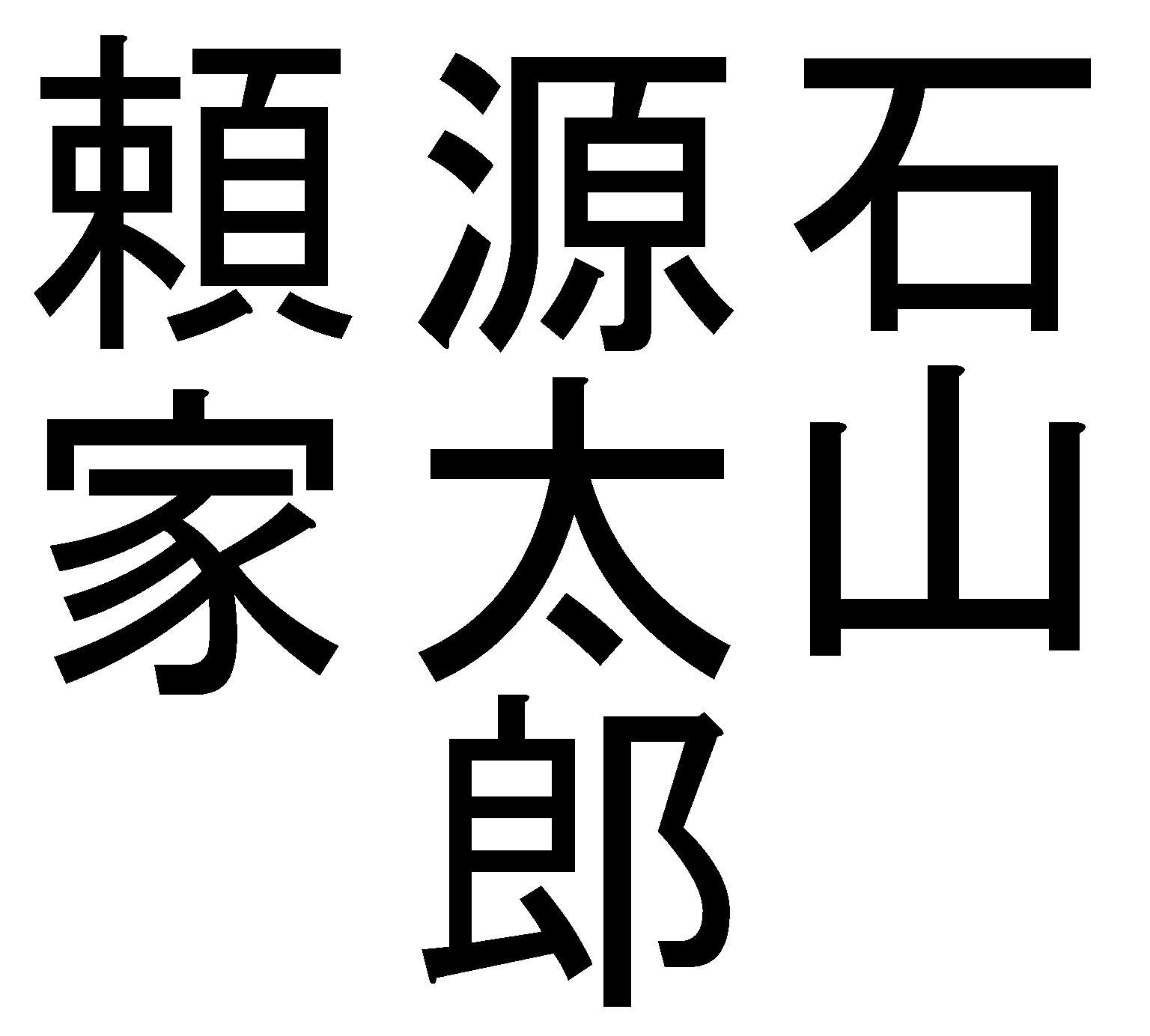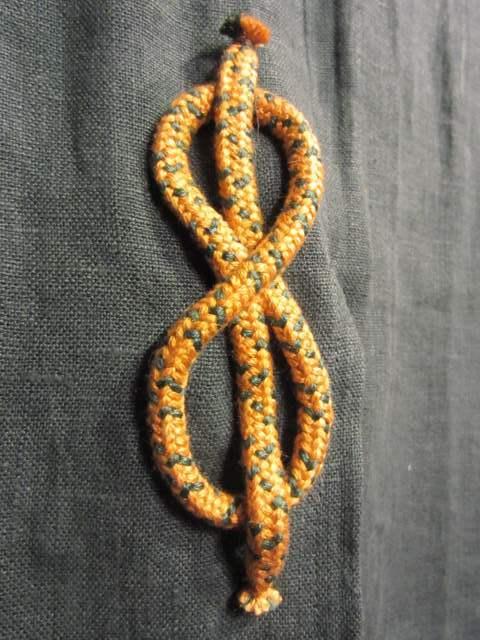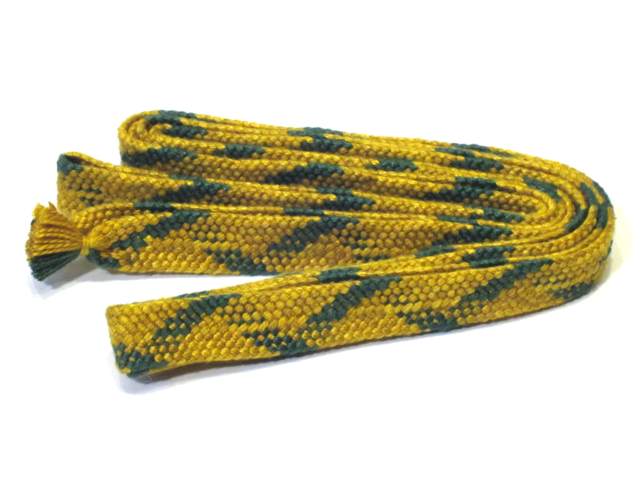 |
Kumihimo for Hitatare Sugataby Ishiyama Gen’tarou Yori’ie |
 |
|
The hitatare sugata was everyday wear for higher class men, especially warriors. Both parts of the outermost layer of the hitatare sugata (the hitatare upper-body garment itself, and the matching hitatare-no-hakama) are embellished with braid. The sleeve ends of the hitatare are laced with braid, and the front lapels are fastened with cords. Decorative knots adorn key points on both garments. The decorative knots are the historical successors of the “kikutoji” (chrysanthemum flower) flat pom-pom adornments often seen on garments from earlier SCA period. It is believed that these embellishments also reinforce the seams at these key points. Chest cords appear on most men’s outer garments throughout period, and survive to this day on the traditional “haori” jacket. Modern haori ties typically begin on smaller loops that are used to fasten them to internal hooks on the garment lapels. Period chest cords begin on larger loops that are sewn to the exterior of the lapels with decorative effect. The sleeve laces could be used to draw up the sleeves for wearing the hitatare under armor. Some variation on the hitatare, like the “yoroi hitarare” use them in this fashion, but more often the laces are decorative. In later period, the sleeve cords became tassels at the bottom of the sleeve opening and were purely decorative. The complete outfit, or “sugata”, includes:
These braids were created between December 2012 and March 2013, on a marudai braiding stand. |
Please view other notable braiding projects in Ishiyama's Kumihimo portfolio.





